In a previous post (click here to read), we admired the spirit of Bohol and its people’s resilience in the face of challenges. We also noted the island featured a number of natural attractions, aside from the draw of its beaches, diving spots and resorts. Here are the other things we saw.
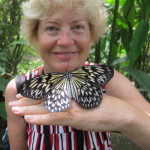
We were quite charmed by the Simply Butterflies Conservation Center in Bilar, a lovely garden full of butterflies. With a great deal of humor, guides educate visitors about the life cycle and habits of butterflies, while we get the opportunity to see numerous tropical species of all sizes flitting about us or mating for hours (“boom-boom” as the guides put it).
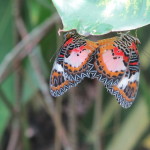
A privately run operation, this garden of insect delights is clearly a labor of love for the owners, though the start of the tour is a bit disconcerting. The entryway is filled with mounted dead butterflies on display for educational purposes, somewhat like an insect version of Day of the Dead memorials. But we soon reached the living pupas, from which new butterflies were emerging as we watched, and then the glory of the full-fledged butterflies in the open gardens.
A more heavily promoted attraction is viewing the native Tarsier monkeys. These tiny yoda-like animals could potentially be found in the wild sections of Bohol, such as the re-planted mahogany forest in the interior (“man-made,” brochures boasted) – at least if the monkeys weren’t so minuscule. They’re only about 100 to 150 millimeters tall (4 to 5 inches). They are named for their long tarsal bones, but are particularly striking because of their huge eyes. These are fixed in their heads, so they must twist their necks up to 180 degrees back to see what’s around them.

Since they are so tough to find in the wild, and mainly nocturnal, curious visitors are bussed instead to one of several preserves. The sanctuary we visited combines a long-time natural habitat for the monkeys, as well as a rehab center for some. The monkeys haven’t quite proved as resilient as the humans, however, as much of their natural environment has vanished due to farming, tourism itself and housing the country’s expanding population. Over a hundred Tarsiers were moved to another preserve on the island because, stressed out, they had stopped eating or reproducing.
We were delighted to see even one of the monkeys, though the half-dozen or so visitors in our group seemed just more annoyance. There we were stalking the Tarsiers in a wild, but fenced-off section. When our guide located one, he had to repeatedly point it out since it was truly tough to locate, even around eye level. Then he tapped on a branch to induce the sleeping monkey to pose for us, swiveling its head and opening wide its huge eyes, all for a good photo. The guide later apologized for only finding three of the monkeys “since the others had disappeared somewhere.” We kept thinking they had vanished to avoid visitors like us. But they certainly were darn cute.
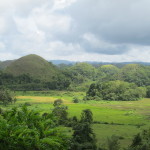
The top natural feature on the island, though, is the Chocolate Hills, an array of reportedly 1776 limestone mounds about 30 to 50 meters high (100 to 175 feet). These mostly grass-covered conical hills look like rounded drops of cookie dough, or more apropos chocolate kisses without the little peaky thing on top. At one time of year, sometime in spring, in the right light, the burned out grass on the brown dirt looks a lot like chocolate. Or so they say, for in a rainy November they all were quite green, as were the rice fields in the flatlands around them.
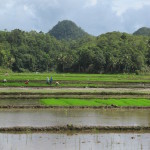
At the hills, most visitors head, or are herded, to the official overlook atop one of the hills – the new overlook, that is, since the old one was knocked down by the earthquake. Not surprisingly, the locals quickly shifted the main viewpoint over to a nearby hill. There, we climbed around 250 steps to the platform, a climb that the guides warn you about as if you were about to ascend the heights of K2. Oddly, even after that climb, few visitors stay long at the top. They snap a few pictures of the green chocolate landscape to prove they’ve been there, but seem unmoved by the odd bumpy things below them.
Perhaps that’s because some of the best views of the hills are at ground level, where – we later learned – you can linger for a few hours on a guided walk or ATV tour. At least, in that way, you could take the time to appreciate this truly unusual landscape – even when it’s green.
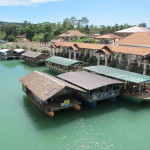
A fourth natural attraction didn’t quite measure up for us: a cruise along the Loboc River aboard one of its popular floating restaurants, complete with serenading musicians from Loboc itself. At the launch point, an undamaged dock just across a pedestrian bridge from the heavily damaged church, we boarded a flat-bottom boat along with about 40 other passengers from many different countries.
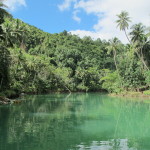
The narrow river itself was lovely during the one hour cruise, winding through banks laden with palms and fern trees. However, the experience was undercut by a mediocre buffet-style meal and a mediocre singer on an awful sound system. Cringingly, he sang “The Love Boat” theme song among other 50s and 60s soft rock hits. Nor did it help to stop for a short performance by two dozen women on ukuleles, sounding more Hawaiian than anything else.
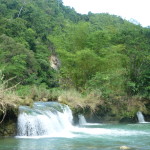
We were thinking that locals should let you hire a smaller boat to cover the same stretch of river, stopping at the easy-going falls upriver for a refreshing swim – while eliminating the mediocre meal and minus the singers or ukuleles. That type of outing would make the river a far more natural attraction to add to all those others Bohol has to offer.
(Also, for more pictures from the Philippines, CLICK HERE to view the slideshow at the end of the Philippines itinerary page.)


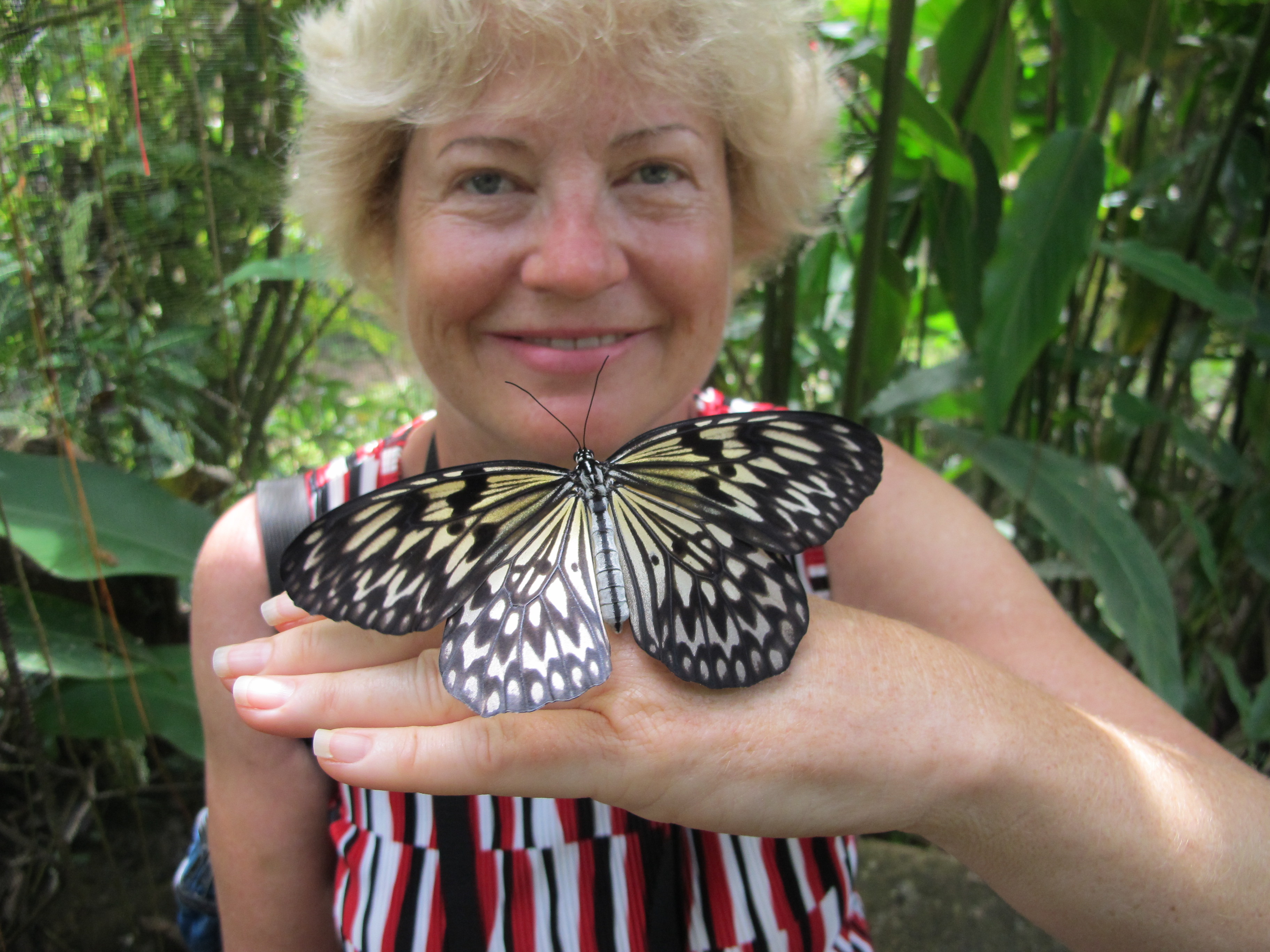
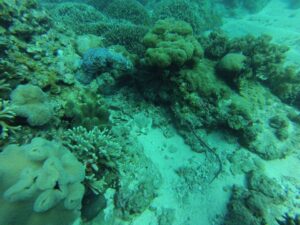
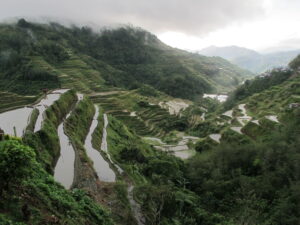
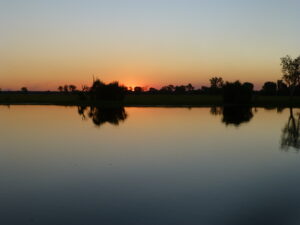
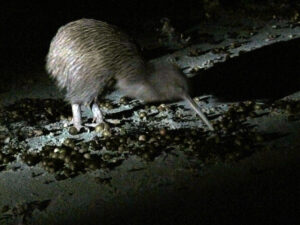
I think one should always be cautious of floating restaurants! Though having seen the boats themselves, I want one!
Just leave the singers back at the dock…along with the ukeleles.
I am really enjoying this current trip with you two… Love butterfly and nature … Enjoy and know you are missed terribly (in a good way) …. Merry holiday thou I hope to speak with you soon